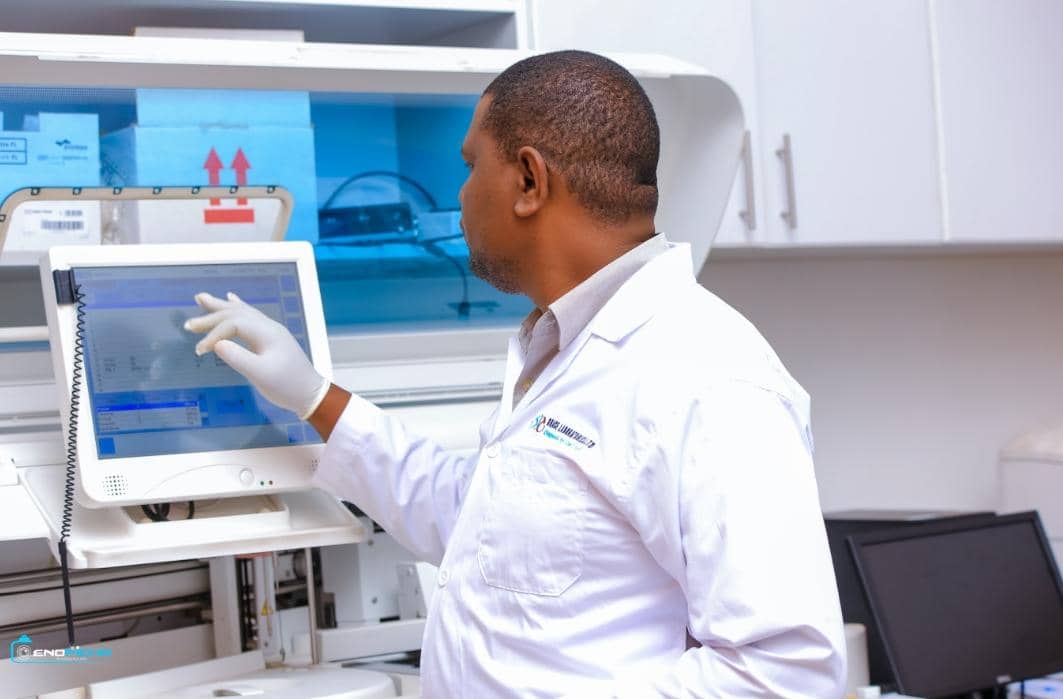
Thyroid Function Tests
The thyroid gland is situated in the neck and produces two hormones Thyroxine or T4 and Tri-iodothyronine or T3. Thyroid function tests (TFTs) are a group of tests requested to help check how the thyroid gland is working, to diagnose thyroid gland disorders and to monitor the response of thyroid disorders to treatment. TFTs include measuring the amount of the thyroid hormones, Thyroxine (T4) or Tri-iodothyronine (T3) and/or the pituitary hormone, Thyroid Stimulating Hormone (TSH) in your blood. These hormones are chemical substances that travel through the bloodstream and control or regulate how fast your body uses energy. Thyroid hormones are present in the blood in either protein bound forms (the majority) or the free and active form of the hormone. Currently, the majority of UK laboratories measure the free form of the hormones – Free T4 (FT4) or Free T3 (FT3).
The release of thyroid hormones into the blood stream is controlled by Thyroid Stimulating Hormone (TSH) produced by the pituitary gland, situated at the base of the brain behind the bridge of your nose. When the blood thyroid hormone concentrations are lower than normal the pituitary gland releases TSH, which in turn increases the release of T4 and T3 into the blood stream. Under normal circumstances the amount of T4 and T3 present in the blood then returns to normal and TSH production is turned off, to maintain constant blood thyroid hormone concentrations.
Thyroid Function Tests usually include some combination of:
If the feedback system involving the thyroid gland is not functioning properly due to one of a variety of disorders, then increased or decreased amounts of thyroid hormones may result. When TSH concentrations are increased, the thyroid will make and release inappropriate amounts of T4 and T3 and the person may experience symptoms associated with hyperthyroidism. If there is decreased production of thyroid hormones, the person may experience symptoms of hypothyroidism.
The following table summarizes some examples of typical test results and their potential meaning.
| TSH | T4 | T3 | INTERPRETATION |
|---|---|---|---|
| High | Normal | Normal | Mild (subclinical) hypothyroidism |
| High | Low | Low or normal | Hypothyroidism |
| Low | Normal | Normal | Mild (subclinical) hyperthyroidism |
| Low | High or normal | High or normal | Hyperthyroidism |
| Low | Low or normal | Low or normal | Nonthyroidal illness; pituitary (secondary) hypothyroidism |
| Normal | High | High | Thyroid hormone resistance syndrome (a mutation in the thyroid hormone receptor decreases thyroid hormone function) |
The above test results alone are not diagnostic but will prompt a health practitioner to perform additional testing to investigate the cause of the excess or deficiency and thyroid disorder. As examples, the most common cause of hyperthyroidism is Graves disease and the most common cause of hypothyroidism is Hashimoto thyroiditis. (See the condition article on Thyroid Diseases for more on these and other related diseases.)
